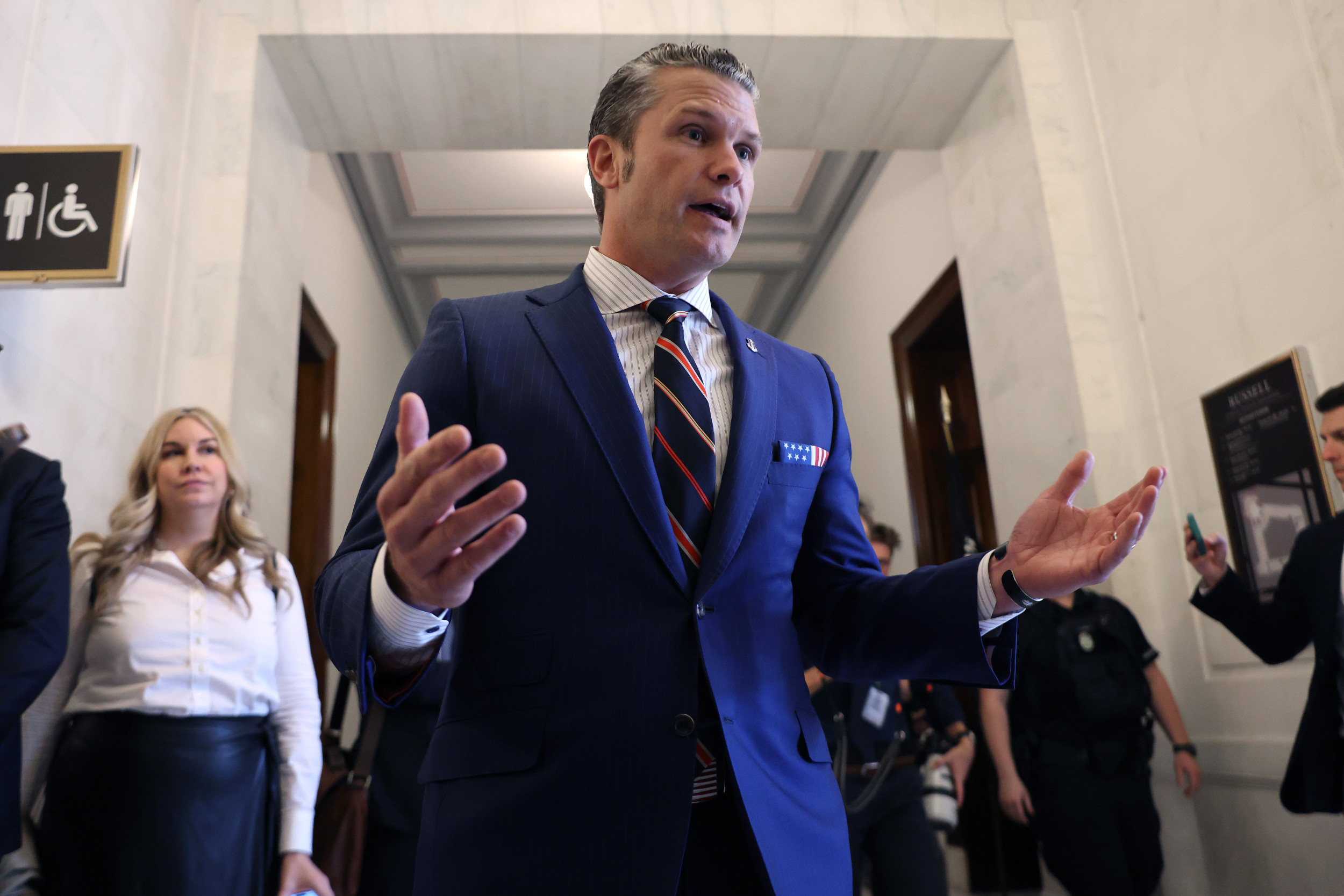Going into 2025, Survivor finds itself in a unique spot. With season 47 nearing its conclusion and 48 already filmed, all eyes are on 49 and especially 50. We’ve seen nearly seven seasons of the New Era so far, and despite the show’s huge popularity and ever-growing fan base, viewers remain divided on how it should move forward. With a landmark season set to film next summer—the first all-returning players season since season 40—Jeff Probst and the producers have some big decisions ahead of them.
One thing is clear: Ninety-minute episodes, introduced last fall during the writers’ and actors’ strikes, are here to stay. The shift has proven popular, generally speaking. Five episodes into season 45, the show was praised for its renewed clarity when it came to both the social relationships on the three tribes and the strategic discussions that went into each pre-merge vote. Even if the current version of the game relies too heavily on twists and other needless complications—like taking away players’ votes—at least the longer runtime leaves more space to keep everything straight.
Since that point, though, we’ve seen that lengthier episodes don’t automatically guarantee a better balance in the edit. Dee Valladares in 45 was probably the most dominant winner of the New Era, but her actual personality and social game were decentered before the last episode or two, with characters like Jake O’Kane and Emily Flippen leaving a stronger and more consistent impression. The season 46 pre-merge felt bloated and unpleasant because of the overexposure of the Yanu tribe (especially Bhanu Gopal, whom the editors seemed to enjoy a lot more than the viewership). The merge fared better, sustained with real, messy human drama. But perhaps that was only possible because so many players misused or neglected idols and advantages, only leaving the editors so much to work with.
And in season 47—a generally pretty solid batch of Survivor with a likable, dynamic cast—the editing remains a mixed bag. Yes, the show has severely cut down on the unnecessary “sob story” segments from past seasons, letting the characters and their present-day actions speak for themselves. And it’s easy to appreciate many of the recent editorial flourishes, like Sue Smey’s “I hate Kyle” supercut from last week’s episode, or Andy Rueda’s “web of alliances” analogy (intercut with a visual of a spider ensnaring an ant). Most of the time, the editors seem to understand how to efficiently manufacture ambiguity in the lead-up to a tribal council, even when the vote is nearly unanimous. But they’ve also shown a refreshing willingness to play into the obviousness of an outcome, as they did in the “downfall of Rome” episode.
But editing an episode of this show isn’t just about crafting a coherent story, or building tension and stakes. It’s also about knowing when to let a story breathe and when to fill in more detail. The same episode that luxuriated in Rome’s demise, for example, apparently didn’t have time to show the old-fashioned schoolyard pick before the merge challenge, a first in the New Era. And Sierra Wright later tweeted that she’d spent the challenge vomiting on and off the high platform, an intriguingly gross detail that would’ve only required a second or two of screen-time to showcase. These minor omissions don’t actively damage the episode, necessarily, but they’re indicative of a strain on the edit that shouldn’t exist with the freedom of extra-long installments.
Perhaps it comes down to the show’s tendency to overexplain itself, particularly concerning the game’s twists and turns, while undervaluing the social dynamics that bond us to these characters. The majority of last week’s tribal council chatter revolved around discussion of the tribe’s pretty-much-unanimous choice to sacrifice their Shots In The Dark rather than any social dynamics. More galling was the tribal in episode seven during an interminable discussion about a very simple choice for the ex-Tukus (vote out Rachel LaMont or turn on each other?) that ended up not mattering at all when Rachel played her Safety Without Power advantage and left tribal early.
Tribal council always involves a lot of play-acting, but that’s especially true now. The lack of real probing into tribe dynamics and alliances these days may be a Jeff-Probst-the-host problem, to be fair. But there’s also no need to prioritize these conversations in the edit if they don’t contain any real insight, especially at such a crucial point in the game. This is the first merge vote of the season, technically, and it should be thrilling to just hang out with the players, exploring all the new dynamics and unlikely (or likely) friendships and rivalries as everyone shares the same camp. (It’d be nice to hear the discussion around the new tribe name, for one.) Instead, we mainly just see strategic bonds being solidified or tested.

Photo: CBS
In some areas, this social/strategic balance has shifted even since the beginning of the New Era. Remember back in season 41, when Shan Smith and Liana Wallace connected about their experiences as women of color during a journey and then shared an emotional exchange about the loss of Shan’s mom? Now, journeys take up an outsize presence in the show, but the emphasis is placed less on the potential for new relationships and more on the possibility of losing a vote as well as the mechanics of whatever challenge is in store for the players. The interesting part of journeys is watching people from different tribes build their own bonds, but we barely see them chat anymore.
At this point in the game, viewers can feel like they know everyone in the cast decently well as individuals and grasp the general alliances and threats. But the actual interpersonal relationships are less consistent. We’re told that Genevieve Mushaluk is tight with Teeny Chirichillo and see the emotional aftermath of Genevieve leaving her friend out of the Sol Yi vote. But what do Genevieve and Teeny talk about and connect on? What are the hopes and dreams and fears they share with each other or the details of their home lives? The same goes for Gabe Ortis and Kyle Ostwald, who are said to have a close relationship they’re nervous to put in danger. But we haven’t seen that dynamic in action since they bonded in the very first episode.
Besides, there’s a difference between strategic complexity and social complexity, and there are only a couple people in the season with both: Genevieve, whose game moves always have reasoning and an emotional context; and Andy, whose journey edit emphasizes all of his failures but also all of the ways he has grown, both as a stealth strategist and a social butterfly. Maybe that complexity makes Genevieve and Andy frontrunners to win, though a more conventional predictive “edgic” (editing logic) analysis might say they’re too prominent in the show for that ending. Perhaps Andy will make it to the final three but fall short of the win. Or perhaps he or Genevieve or both will get taken out at five or six after being deemed huge threats, while the W ultimately goes to someone seen a bit less in the edit. (Rachel seems the most likely at this moment.)
But it’s always hard to know in the New Era, when winner edits have become more difficult to detect. Erika Casupanan’s triumph in season 41 came as a surprise given her limited screen-time, and Mike Gabler’s befuddling win in season 43 was hardly justified by what we saw of him. Those two wins presented serious challenges to people like Inside Survivor’s Martin Holmes, who regularly posts “Edit Bay” dissections.
Is it a good or bad thing that the traditional winner edit has mostly eroded at this point? There isn’t one simple answer. It’s natural to make concessions in the interest of entertainment and unpredictability. And sometimes totally coherent (or even truthful) storytelling must be sacrificed for the sake of the narrative. If Genevieve does end up winning this season, for example, her near-invisibility in the first three episodes will have been a successful feint. But in the worst cases, the effort to blindside viewers only results in frustration and confusion.
Winner edits aren’t unique to Survivor, though they function differently in series like RuPaul’s Drag Race, The Challenge, and The Amazing Race, with less of a community around obsessively mining for clues in the depiction of each contestant. (If you google “edgic,” the results are overwhelmingly focused on Survivor.) Big Brother is probably the most comparable social-strategy game to Survivor, but it doesn’t deal with these problems, given the live component and the sheer amount of time spent with all the contestants over 30-plus episodes.
Perhaps Probst should set aside his pride and take some cues from Australian Survivor, where the winner edits are slightly more telegraphed but often more satisfying. Or look at The Traitors, the second season of which juggled reality stars from all different types of shows and expertly interwove the social and strategic elements in the edit. Viewers spent this whole season getting to know these folks as people, not just players.
When it comes to prepping for Survivor’s historic season 50, most will fixate on the casting as well as the twists and advantages—and for good reason. But much of the most important work will come in the post-game, when the editors sit down to actually piece together a narrative. Hopefully they’ll remember that the focus here should be the players, not the game. We don’t tune in to this show every week just to figure out who wins or to see people pull off cool moves. This is a game of human chess, yes, but those chess pieces are real people. It’s Survivor’s job to let us see them that way.




















 English (US) ·
English (US) ·